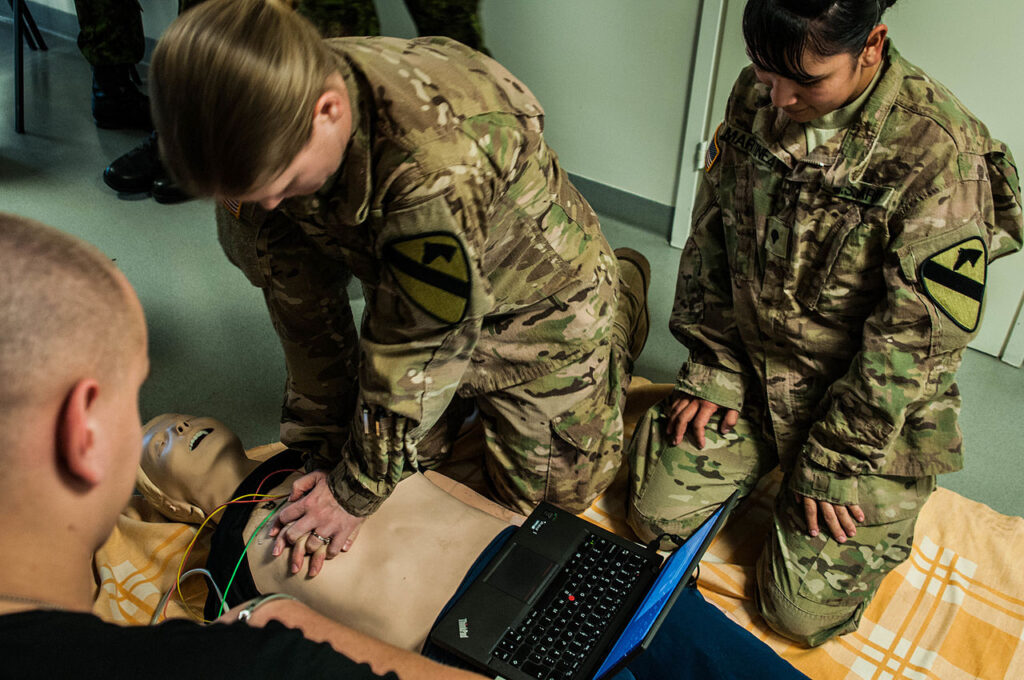As a member of the Army Medical Department, you are expected to know how to perform basic lifesaving procedures in an emergency.
Chest CompressionsSuch emergencies can occur anywhere — on the battlefield, in your home, in a restaurant, or on the highway. In such an emergency, a person’s life may depend upon your knowledge of what to do and upon your ability to do the procedure properly and quickly.
This subcourse provides instruction which will enable you to remove an obstruction from a casualty’s airway, restore respiration to a casualty who has stopped breathing, and restore blood circulation to a casualty whose heart has stopped beating. Instruction is provided for performing these procedures for an adult casualty, a child, and an infant. Study and know these procedures BEFORE you are faced with an emergency.
While this online course preserves the Army’s original material, some important updates are also provided, identified by a dark red border.
Subcourse Components:
The subcourse instructional material consists of the following:
Lesson 1, Review of the Circulatory and Respiratory Systems.
Lesson 2, Heart Attack and Cardiopulmonary Resuscitation.
Lesson 3, Initiate Rescue Breathing on an Adult.
Lesson 4, Perform Cardiopulmonary Resuscitation on an Adult.
Lesson 5, Remove an Upper Airway Obstruction in an Adult.
Lesson 6, Perform Cardiopulmonary Resuscitation on a Child or Infant.
Lesson 7, Remove an Airway Obstruction in a Child or Infant.
Current Overview
Study Suggestions:
Here are some suggestions that may be helpful to you in completing this subcourse:
–Read and study each lesson carefully.
–Complete the subcourse lesson by lesson. After completing each lesson, work the exercises at the end of the lesson, marking your answers in this booklet.
–After completing each set of lesson exercises, compare your answers with those on the solution sheet that follows the exercises. If you have answered an exercise incorrectly, check the reference cited after the answer on the solution sheet to determine why your response was not the correct one.
To receive credit hours, you must be officially enrolled and complete an examination furnished by the Nonresident Instruction Branch at Fort Sam Houston, Texas.

